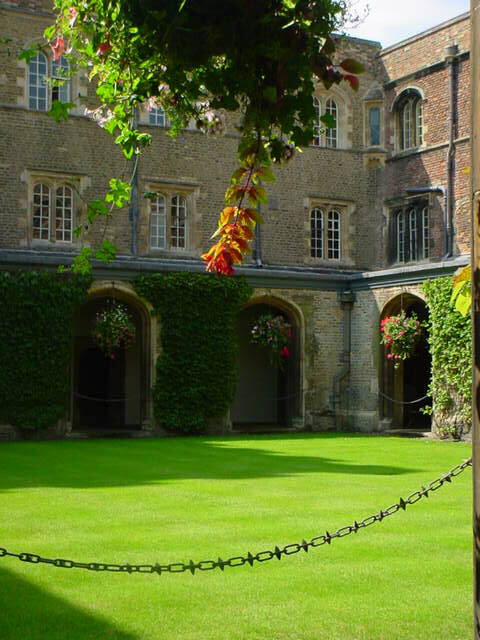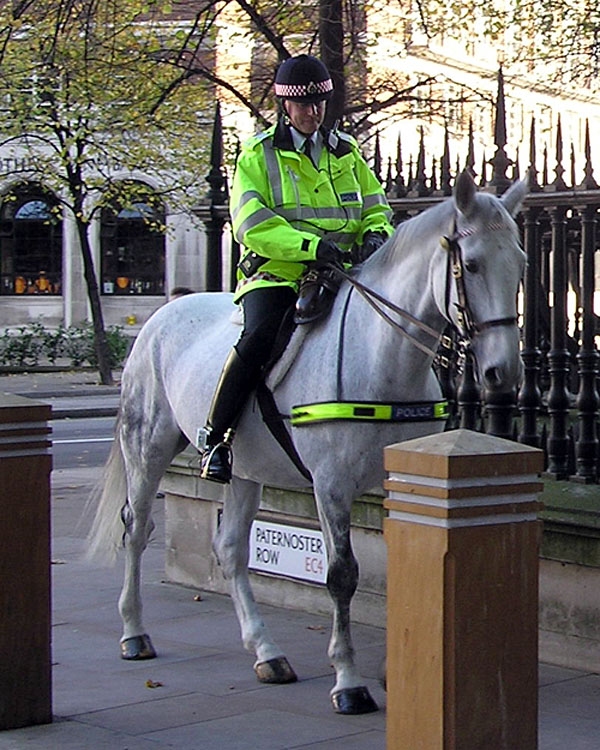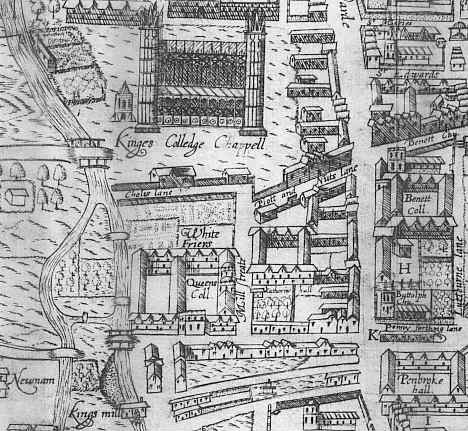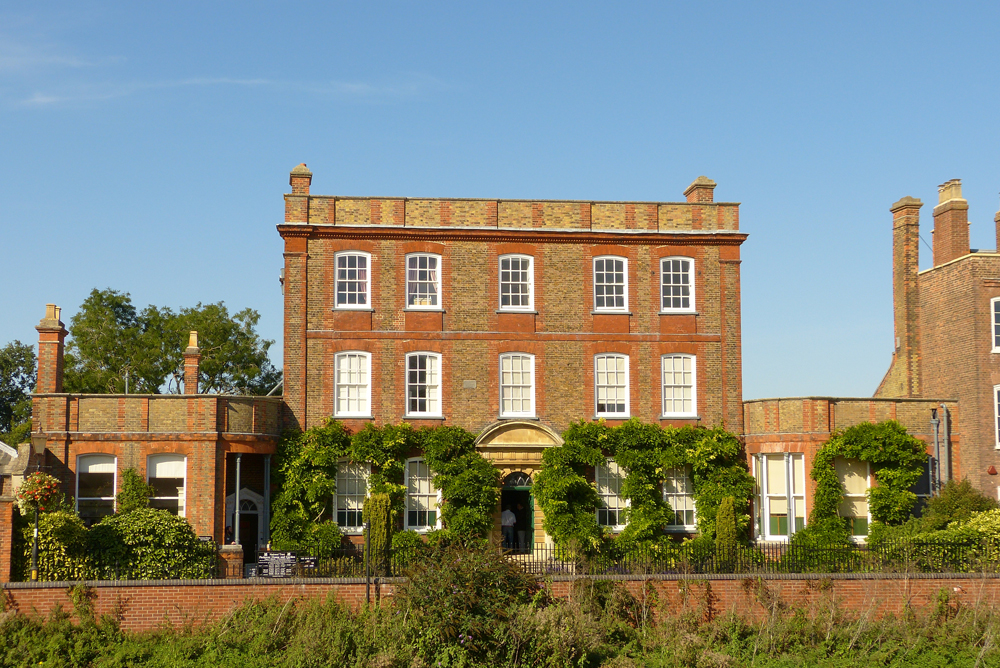|
John Fuller (college Head)
John Fuller (died 1558) was the master of Jesus College, Cambridge. As bishop's chancellor in Ely, Cambridgeshire, he was charged with suppressing Christian heresy, condemning several heretics to be burnt at the stake. Biography Fuller was a native of Gloucester. He was educated at All Souls College, Oxford, where he was admitted to the Bachelor of Canon Law degree in July 1533, and became a fellow in 1536. He graduated Doctor of Canon Law in January 1546, and in the same year admitted himself a member of Doctors' Commons. In 1547 he served as rector of Hanwell, Middlesex, but resigned the charge in 1551, having in 1550 been appointed vicar-general or chancellor to Thomas Thirlby, bishop of Norwich. At about the same time he became vicar of Swaffham, and rector of East Dereham and North Creake in Norfolk. Marian Persecutions Upon Thirlby's translation to the diocese of Ely, Fuller went with him as chancellor. On 24 September 1554 Fuller was installed Thirlby's proxy in Ely ... [...More Info...] [...Related Items...] OR: [Wikipedia] [Google] [Baidu] |
Jesus College, Cambridge
Jesus College is a Colleges of the University of Cambridge, constituent college of the University of Cambridge. Jesus College was established in 1496 on the site of the twelfth-century Benedictine nunnery of St Radegund's Priory, Cambridge, St Mary and St Radegund by John Alcock (bishop), John Alcock, then Bishop of Ely. The cockerel is the symbol of Jesus College, after the surname of its founder. For the 300 years from 1560 to 1860, Jesus College was primarily a training college for Church of England clergy. Jesus College has assets of approximately £375m making it Cambridge's fourth-wealthiest college. The college is known for its particularly expansive grounds which include its sporting fields and for its proximity to its Jesus College Boat Club (Cambridge), boathouse. Three members of Jesus College have each received a Nobel Prize. Two fellows of the college have been appointed to the International Court of Justice. Sonita Alleyne was elected master of Jesus College in 2 ... [...More Info...] [...Related Items...] OR: [Wikipedia] [Google] [Baidu] |
Diocese Of Ely
The Diocese of Ely is a Church of England diocese in the Province of Canterbury. It is headed by the Bishop of Ely, who sits at Ely Cathedral in Ely, Cambridgeshire, Ely. There is one suffragan bishop, suffragan (subordinate) bishop, the Bishop of Huntingdon. The diocese now covers the modern ceremonial county of Cambridgeshire (excluding the Soke of Peterborough) and western Norfolk. The diocese was created in 1109 out of part of the Diocese of Lincoln. The diocese is ancient, and the area of Ely was part of the patrimony of Saint Etheldreda. A religious house was founded in the city in 673. After her death in 679 she was buried outside the church, and her remains were later reburied inside, the foundress being commemorated as a great Anglian saint. The diocese has had its boundaries altered various times. From an original diocese covering the historic county of Cambridgeshire and the Isle of Ely, Bedfordshire and Huntingdonshire were added in 1837 from the Diocese of Linco ... [...More Info...] [...Related Items...] OR: [Wikipedia] [Google] [Baidu] |
Paternoster Row
Paternoster Row is a street in the City of London that was a centre of the London publishing trade, with booksellers operating from the street. Paternoster Row was described as "almost synonymous" with the book trade. It was part of an area called St Paul's Churchyard. In time Paternoster Row itself was used inclusively of various alleys, courts and side streets. Largely destroyed during aerial bombing in World War II, the street's area is now the site of much of the post-war Paternoster Square development. Current route The street was devastated by aerial bombardment during World War II. In 2003 the area was pedestrianised with Paternoster Square, the modern home of the London Stock Exchange, at the west end, and a paved area around St Pauls' Coop and an entrance to St Pauls tube station at the East, bounded by St Pauls Churchyard, Old Change, New Change, Cheapside and Payner Alley. The route of Paternoster Row is not demarcated across the open areas, although there is a roa ... [...More Info...] [...Related Items...] OR: [Wikipedia] [Google] [Baidu] |
Queens' College, Cambridge
Queens' College is a Colleges of the University of Cambridge, constituent college of the University of Cambridge. Queens' is one of the 16 "old colleges" of the university, and was founded in 1448 by Margaret of Anjou. Its buildings span the River Cam with the Mathematical Bridge and Silver Street connecting the two sides. College alumni include Desiderius Erasmus, who studied at the college during his trips to England between 1506 and 1515. Other notable alumni include author T. H. White, Israeli politician Abba Eban, founding father of Ghana William Ofori Atta, newsreader and journalist Emily Maitlis, actor and writer Stephen Fry, the Governor of the Bank of England Andrew Bailey (banker), Andrew Bailey, the British Member of Parliament (United Kingdom), members of Parliament Stephen Kinnock, Liz Kendall and Suella Braverman, and Fields Medallist James Maynard (mathematician), James Maynard. The college's first Nobel Prize winner is Demis Hassabis, Sir Demis Hassabis who rece ... [...More Info...] [...Related Items...] OR: [Wikipedia] [Google] [Baidu] |
Hildersham
Hildersham is a small village 8 miles to the south-east of Cambridge, England. It is situated just off the A1307 between Linton, Cambridgeshire, Linton and Great Abington on a tributary of the River Cam known locally as the River Granta. The parish boundary extends from the Roman Road, known in medieval times as Wool Street, north of the village, to the border with Essex to the south. The village sign was designed by Mrs D.E. Arkright, who along with her husband, Mr R.B. Arkright MBE, lived in the village for over 40 years. Population In the 2001 census, the parish had a population of 202, in 81 households, increasing to a population of 211 in 90 households at the 2011 Census. History The place-name 'Hildersham' is first attested in the Domesday Book of 1086, where it appears as ''Hildricesham''. The name means 'Hildric's village or settlement'. At the time of Domesday there were 20 residents in the parish. One of England's greatest chroniclers, Matthew Paris, is believed ... [...More Info...] [...Related Items...] OR: [Wikipedia] [Google] [Baidu] |
Fen Ditton
Fen Ditton is a village and civil parish in the South Cambridgeshire district, on the northeast edge of Cambridge in Cambridgeshire, England. In 2011 the parish had a population of 760. The parish covers an area of . Fen Ditton lies on the east bank of the River Cam, on the road from Cambridge to Clayhithe, and close to junction 34 of the A14. The nearest railway station is Cambridge North; Waterbeach station is several kilometres north of the village. History The site has been occupied since at least neolithic times, and stone tools have been found on the meadows between the village and the river. The name was first recorded in around 950 as ''Dittone'', meaning "the village by the ditch", derived from the Fleam Dyke, the prehistoric ditch that passed through the village from the river to the edge of the fens at Stow-cum-Quy and can still be seen just to the east of the village. The name was later changed to its present name to distinguish it from Wood Ditton. The vi ... [...More Info...] [...Related Items...] OR: [Wikipedia] [Google] [Baidu] |
Great Wilbraham
Great Wilbraham is a small village situated in a rural area some to the east of Cambridge, between the edge of an area of low-lying drained fens to the west and north, and higher ground beyond the A11 to the east. The administrative authorities are Cambridgeshire County Council, South Cambridgeshire District Council, and Great Wilbraham Parish Council. History The parish of Great Wilbraham has been occupied for thousands of years; a Neolithic camp was excavated in the west of the parish in 1976, and a Bronze Age barrow, where up to eight burials were discovered in 1852, lies alongside the Fleam Dyke in the southern corner of the parish. A possible Roman dwelling was also located in woodlands. The medieval history of Great Wilbraham is tied up with that of neighbouring Little Wilbraham, and they were first distinguished in the 13th century when it was also known as King's Wilbraham. Listed as ''Wilburgeham'' in the 10th century, and ''Wiborgham'' in the Domesday Book, the n ... [...More Info...] [...Related Items...] OR: [Wikipedia] [Google] [Baidu] |
Convocation
A convocation (from the Latin ''wikt:convocare, convocare'' meaning "to call/come together", a translation of the Ancient Greek, Greek wikt:ἐκκλησία, ἐκκλησία ''ekklēsia'') is a group of people formally assembled for a special purpose, mostly ecclesiastical or academic. The Britannica dictionary defines it as "a large formal meeting of people (such as church officials)". In academic use, it can refer variously to the formal body of an institution's alumni or to a ceremonial assembly of the university, particularly at a graduation or commencement ceremony but, at some institutions, for a ceremony at the start of the academic year to welcome incoming students. Ecclesiastical convocations A synodical assembly of a church is at times called "Convocation". Convocations of Canterbury and York The Convocations of Province of Canterbury, Canterbury and Province of York, York were the synodical assemblies of the two Provinces of the Church of England until the Chu ... [...More Info...] [...Related Items...] OR: [Wikipedia] [Google] [Baidu] |
Diocese
In Ecclesiastical polity, church governance, a diocese or bishopric is the ecclesiastical district under the jurisdiction of a bishop. History In the later organization of the Roman Empire, the increasingly subdivided Roman province, provinces were administratively associated in a larger unit, the Roman diocese, diocese (Latin ''dioecesis'', from the Greek language, Greek term διοίκησις, meaning "administration"). Christianity was given legal status in 313 with the Edict of Milan. Churches began to organize themselves into Roman diocese, dioceses based on the Roman diocese, civil dioceses, not on the larger regional imperial districts. These dioceses were often smaller than the Roman province, provinces. Christianity was declared the Empire's State church of the Roman Empire, official religion by Theodosius I in 380. Constantine the Great, Constantine I in 318 gave litigants the right to have court cases transferred from the civil courts to the bishops. This situa ... [...More Info...] [...Related Items...] OR: [Wikipedia] [Google] [Baidu] |
Proctor
Proctor (a variant of ''wikt:procurator, procurator'') is a person who takes charge of, or acts for, another. The title is used in England and some other English-speaking countries in three principal contexts: # In law, a proctor is a historical class of lawyers, and the King's (or Queen's) Proctor is a senior government lawyer. # In religion, a proctor represents the clergy in Church of England dioceses. # In education, proctor is the name of university officials in certain universities. In the United States and some other countries, the word "proctor" is frequently used to describe someone who supervises an Test (assessment), examination (i.e. a supervisor or Exam invigilator, invigilator). Law England A proctor was a legal practitioner in the ecclesiastical court, ecclesiastical and admiralty courts in England. These courts were distinguished from the common law courts and courts of equity because they applied "civil law" derived from Roman law, instead of English common law ... [...More Info...] [...Related Items...] OR: [Wikipedia] [Google] [Baidu] |
Wisbech
Wisbech ( ) is a market town, inland port and civil parish in the Fenland District, Fenland district in Cambridgeshire, England. In 2011 it had a population of 31,573. The town lies in the far north-east of Cambridgeshire, bordering Norfolk and only 5 miles (8 km) south of Lincolnshire. The tidal River Nene running through the town is spanned by two road bridges. Wisbech is in the Isle of Ely (a former administrative county) and has been described as "the Capital of The Fens". Wisbech is noteworthy for its fine examples of Georgian architecture, particularly the parade of houses along the North Brink, which includes the National Trust property of Peckover House and Garden, Peckover House and the The Crescent, Wisbech, Crescent, part of a crescent (architecture), circus surrounding Wisbech Castle. History Toponymy The place name "Wisbech" is first attested in the ''Anglo-Saxon Chronicle'' for the year 656, where it appears as ''Wisbeach''. It is recorded in the 1086 Do ... [...More Info...] [...Related Items...] OR: [Wikipedia] [Google] [Baidu] |
Marian Persecutions
Protestants were executed in England under heresy laws during the reigns of Henry VIII (1509–1547) and Mary I (1553–1558), and in smaller numbers during the reigns of Edward VI (1547–1553), Elizabeth I (1558–1603), and James I (1603–1625). Most were executed in the short reign of Mary I in what is called the Marian persecutions. Protestant theologian and activist John Foxe described "the great persecutions & horrible troubles, the suffering of martyrs, and other such thinges" in his contemporaneously-published ''Book of Martyrs''. Protestants in England and Wales were executed under legislation that punished anyone judged guilty of heresy against Catholicism. Although the standard penalty for those convicted of treason in England at the time was execution by being hanged, drawn and quartered, this legislation adopted the punishment of burning the condemned. At least 280 people were recognised as burned over the five years of Mary I's reign by contemporary sourc ... [...More Info...] [...Related Items...] OR: [Wikipedia] [Google] [Baidu] |







